Top 6 Water Towns in China
There are no better places than ancient water towns where one is still able to experience the back-in-time and rustic charm of south China. Above there is heaven and below are Suzhou & Hangzhou. Nestled at Yangtze Delta, as the richest area for long in ancient China, Suzhou and Hangzhou boasted numerous trading and living centers around rivers, lakes and canals, which now become brilliant weekend getaways and holiday destinations.
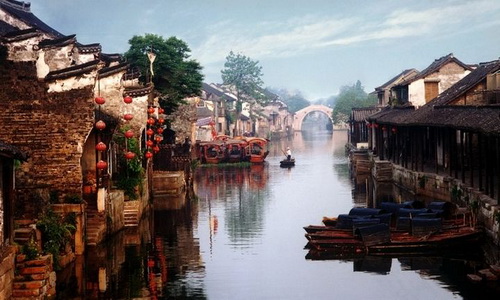
They are blessed with easy accesses covered in two-hour transportation circle among Shanghai, Hangzhou and Suzhou. Wondering which one is the best to go? Every water town retains its own charms, but catering for different travel interests, here we list and rate the top six water towns in China.
Famed as the Venice of the East, Tongli is a small but diverse water town with a labyrinth network of 15 canals formed in Song Dynasty, more than 1,000 years old. Nearly every folk house is nestled on or by a water channel and linked by time-washed stone arch bridges, which makes Tongli one of the most superb photogenic places. Lovely shops and restaurants open their doors facing the narrow streets, and their backyards all face the canal. Standing on the bridges, one could see nothing buzzing but the authentic and quiet water-side way of life of local people.
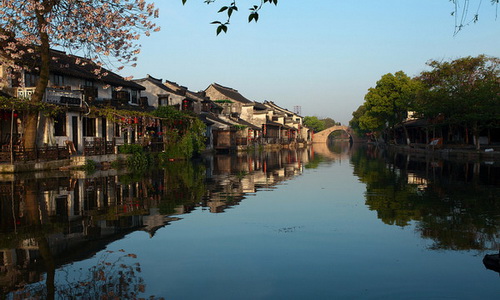
Tongli is also fantastic for a boat cruise by drifting through the willow tree-lined waterways and going under through the elegant stone bridges, during which you may meet some quaint waterside cafes, bookstores, mini flower gardens of locals and even an old fisherman with his cormorants.
What really makes Tongli stand out from other water towns surrounding Shanghai, is its hidden gems including UNESCO-listed Retreat and Reflection Garden and China Wedding Museum. Only about 1-hour ride from Shanghai and 30 minutes from Suzhou, Tongli is the most ideal option to visit in addition to its primitiveness and slower pace of life.
- Crowds: Tongli is the least touristy, and particularly quiet on weekdays.
- Suitable for: Photographers, slow-paced travelers, leisure and escape seekers
- Highlights: Retreat & Reflection Garden, China Wedding Museum, Taiping Bridge
- Time of Visit: Half day
As an over 1000-year-old water town, Xitang gets more famous as the shooting place of the film Mission Impossible III. Regularly, the town is also crisscrossed by a number of water canals, with stone arch bridges linking through all the residential areas. With a less commercial vibe, Xitang encourages its more than 10,000 local residents to keep their primitive and original lifestyle, which is totally different from Zhouzhuang who had their locals moved out and invited investments. Thus in Xitang you could still get a chance to see how natives live a simple life in this dreamland.
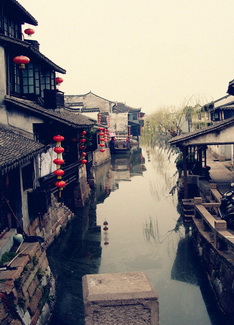
What makes Xitang different from other water towns is its Langpeng, a kind of sheltered waterside walkway that will keep your shoes free of drench in rainy days. The most romantic Langpeng in Xitang is Mist and Rain Corridor, where a leisure walk even rivals over a gondola ride on the canals. Another highlight of Xitang could be found in its maze-like lanes, and the narrowest Shipi Lane only allows one person to go through at one time.
If talking about the night view of water towns, Xitang is none to the second. The lantern-lined canals would make you feel like stepping into a dreamy world of China's past. Meanwhile, Xitang arguably has the best night clubs that are great for both young and young-at-heart.
- Crowds: It is overrun at weekends and holidays.
- Suitable for: Nightlife hunters, photographers, movie buffs
- Highlights: Mist and Rain Corridor, Button Museum, Shipi Lane and Songzi Laifeng Birdge
- Time of Visit: One Day
Nanxun used to be a hard-to-find residential area for the richest merchants of China, whose total wealth is more than the annual fiscal revenue of the country. One of the most fabulous residence in Nanxun is the Little Lotus Garden (Xiao Lian Zhuang) along with a huge private library which belong to the wealthiest family of Liu Yong. In such a traditional Chinese garden, you could even see the owner's avant-garde flavor from a century-old western baroque architecture with dancing halls and electric lamps in 1900, an era when nearly 90 percent of Chinese people had no idea of what electricity was.
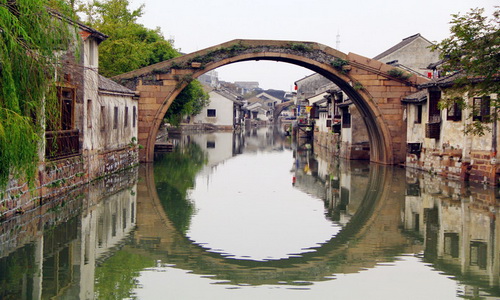
What really makes Nanxun worthy of going is its well-preserved folk residences and original lifestyle. Baijianlou, situated to the north of the core area of Nanxun, is an unbeatable place for a walk along the waterfront path to experience the undisturbed local ambience, where you may meet seniors siting in bamboo armchair with cigarette and women busy with washing by the waterside. Even though there is one or two shops, they are non-commercial for tourists but for local needs.
There are shows of traditional wedding ceremonies on Nanxun every day. Young couples dressed in red long robes, and bride with her faced covered with red veil, get married on a boat decorated with flowers, which is so traditional but with its own style of water towns.
- Crowds: Nanxun is absent from the most tourist crowds' trails.
- Suitable for: weekend getaway seekers, and tourists who hate crowds
- Highlights: Little Lotus Garden, Zhang Shiming's Formmer Residence, Baijianlou, traditional Chinese wedding ceremony
- Time of Visit: Half day
With a distance of 47 kilometers and just an hour car ride from Shanghai, Zhujiao is the closest water town that is best for travelers with tight schedule and limited time. Blessed with an over 1,000 years history, Zhujiajiao has all charms of China typical water towns, including fascinating waterways, arched stone bridges and cobble-paved streets as well as densely flanked ancient folk residences washed by time.
The town is centered on a wide main canal where gondolas and waterside shops are clustered, and the longest Fangsheng Bridge spans over it, where one could buy small fishes and release them into the water for good blessing.
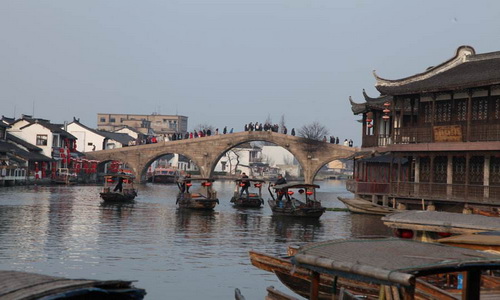
Zhujiajiao is kind of bustling and full of petty bourgeoisie flavor where a great number of elegant western restaurants and cafes are arrayed, and that let you enjoy your leisure in familiar surroundings. Besides, Zhujiajiao might be the water town with most tea houses, and it is easy to escape away from the crowds to enjoy some drinks in cafe hidden in some offbeat side lanes or on a large cruising boat.
The North Street of Zhujiajiao is beaten by travelers, but it is still worthy of a stroll as so many local delicacies are on offer. Zhujiajiao also gives its visitors insightful glimpse of traditional garden architecture like the well-known Kezhi Garden and Majia Garden that could be dated back to Ming and Qing Dynasties (1368 to 1911).
- Crowds: very crowded on weekends and holidays
- Suitable for: travelers pressed for time, architecture lovers, foodies, tea lovers
- Highlights: Fangsheng Bridge, Kezhi Garden, Yuanjin Buddhist Temple
- Time of Visit: Half day
Yet Zhouzhuang is crowned as the number one water town in China. As the largest and earliest developed water town, it is well worth the title but also get undermined because of it. It is so busy (the same in weekdays) that even traffic jams take place on its narrow water channels. Many blame that Zhouzhuang becomes too commercialized and overcrowded though all the time-honored architectures have not been changed and still remain well-kept.
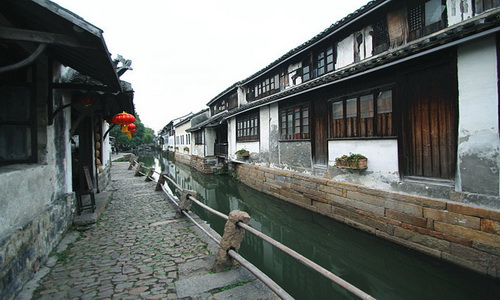
With a history of over 900 years, Zhouzhuang is crammed with graceful folk houses along the four main rivers and eight streets spanning across the town. Sadly, none of these streets can get rid of commercialism, so you can hardly see how real locals live a life in the town. The real gem of Zhouzhuang could be explored out on its 14 archaic bridges dating back to Yuan, Ming and Qing Dynasty.
- Crowds: It is crowded all year round, and you can hardly see it in peace.
- Suitable for: Photographers, movie buffs
- Highlights: Shen's Mansion, Zhang's Mansion, Double Bridge, Quanfu Temple
- Time of Visit: One Day
With a proud long history of 1,300 years, Wuzhen is one of China's top five historical & cultural towns. This water town is undeniably picturesque and charming, and gets more popular since it was selected as the permanent site of the World Internet Conference.
The ancient Beijing-Hangzhou Grand Canal flows through Wuzhen, which splits the pretty water town into two zones, namely Xizha (the west section) and Dongzha (the east section). The east part is always commercial and tourist-filled, while the west is much more comfortable for sightseeing as it is less touristy and quieter. The west part of Xizha mainly caters to high-end customers by getting facilitated with the best and finest hotels, restaurants and conference centers among all other water towns in China. Thus their prices are relatively higher than that of eastern part.
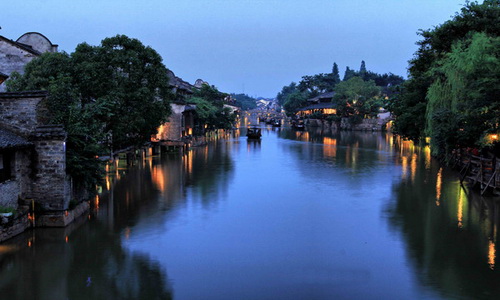
Staying overnight in a guesthouse facing the water is truly worthwhile in Wuzhen, as it is most fabulous at night when the lanterns and lights come on along the canals and you are able to take in the peaceful reflection of the roofs and moon in the water just from your window. This town would let you immerse into a dreamy setting along with its wooden houses, cobbled streets and stone bridges, and also gain nice insights into ancient folk culture of China. With an eye to its location, Wuzhen could be easily accessed by expressways from Shanghai, Hangzhou and Suzhou.
- Crowds: Dongzha is always crowded, while Xizha is less touristy and good for a tour all year round.
- Suitable for: Photographers, leisure travelers, lazy visitors on vacation
- Highlights: Chinese Foot-binding Culture Museum, Ancient Bed Museum, Old Opera Stage, boat tips on canals
- Time of Visit: One Day









